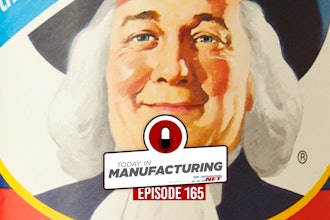Outsourcing has been an enormously popular trend in manufacturing for the U.S. However, as popular as it is, and as much as it might make sense on paper, it doesn’t always produce the business benefit we seek. Consider the change that outsourcing means to your business before you jump on the train with everyone else.
I’m afraid that the title of this post is a little impolite, with a derogatory slant for each of us participating in outsourcing our manufacturing and production. I do intend to draw a simile between hobos jumping on a moving train for no other reason than to go somewhere else, and businesses that decide to outsource without a plan for how to deal with the change that such a decision implies.
I’m not a logistical expert, but I do know very, very well what it means to change processes, skill sets, and behaviors suddenly. Often, when we make business decisions that impose major changes, we neglect to consider the impact that the sudden change and the learning curve will have on our business and its performance.
This week I read about the delivery of Boeing’s 787 Dreamliner, three years late. Boeing’s explanation to the press for why the 787 was so late is that it was the first aircraft that Boeing had generally outsourced (other issues such as a 58-day labor strike also contributed). According to The Seattle Times, the 787 development cost more than twice what typical new jet developments cost, because of delays.1
Boeing isn’t the only business to struggle with on-time delivery after outsourcing production. Another business, coincidentally also in the airline business, and one where some of my friends and colleagues work, is also struggling. I won’t name it for the sake of respect to my colleagues’ confidences
This business, several years ago, boasted repeated on-time delivery numbers in the upper 90’s, some of the best numbers in the corporation. It needed to expand its production in order to meet demands and leaders decided, rather than expanding the operations, to begin outsourcing production and to use the existing facility only for final assembly.
Unfortunately, today the on-time delivery numbers are embarrassing enough that my contacts in the business don’t know what they really are. Suffice to say, some deliveries are more than 90-days late and they went an entire month recently without a single delivery.
My contacts in the business have discussed many of their challenges with me in recent months, either seeking advice, or just sharing insights back and forth. From those discussions, it’s apparent that the root of the on-time delivery problem is that parts are not available to complete the assemblies. In other words, the outsourced production is not producing.
A related, contributing cause is the introduction of an Enterprise Resource Planning (ERP) system that has resulted in logistics systems challenges. I say it’s related for two reasons. First, figuring out how to make the system work for the business led to some of the ordering and delivery mishaps. Second, the phenomenon surrounding the ERP system’s failure to produce better efficiency is the same as the one surrounding outsourcing’s failure to produce better efficiency; change happened.
Based on my examples, it would be easy to conclude that outsourcing is a recipe for disaster and that the suppliers to whom we outsource are just not capable of meeting our needs. That would be the wrong conclusion. Too many people are successful with outsourcing for its failure to be a rule of thumb.
The problem is not necessarily with our suppliers, but with our skills for outsourcing. Think about it. If our strength is in-house production, why should we believe that outsourcing that production would be a skill we possess? Yet, businesses do it all the time. We forget that outsourcing is a skill that must be learned and perfected.
Not only is outsourcing a skill, but the process changes for our businesses are likewise a shock to the system. Our processes for product development change because we now need to involve many more suppliers in our design decisions. Our logistical efforts become significantly more challenging and our processes for managing those challenges must catch up. Our quality and testing processes change. Most of our processes must adapt or be re-invented.
The level of skill set and behavioral change associated with all of those process, communication, and business changes is not something that happens quickly. It can take years to learn those skills and adapt those processes by trial and error. We don’t consider that in our business plan when we make the decision to outsource.
If your business is facing the necessity of outsourcing, don’t proceed blindly. You have read this post; you are now wise to the risk. Make sure your business has a plan to deal with the learning curve that goes along with the outsourcing decision.
Assume that supply will lag until you and your suppliers work out a system of order and delivery that works for all of you. Don’t assume that it will just happen. Assume that some of your supplier selections will be mistakes and you will need to make changes. It’s tempting, when outsourcing to save money, to try and optimize that agenda with the lowest-cost suppliers, but consider the impact of late or unsatisfactory components.
Assume that you will have quality issues and some re-dos as you and your suppliers learn to understand each other’s expectations. Consider what these misunderstandings and corrections will do to your timing and cost predictions.
If you are facing an inevitable outsourcing movement, make a solid risk mitigation and management plan. Give your business time to get through the learning curve. Consider hiring someone, either new personnel or consultants, to help you accelerate that curve.
If you have already jumped on the outsourcing train and are struggling, engage some experts and get their help identifying your root problems and solving them, drafting new processes, and learning new behaviors. These experts might be consultants or peers in other, non-competitor businesses.
Changes to business models mean major changes to skills, processes, and behaviors. Those changes don’t happen immediately. Make sure that your expectations and your plans account for a tough learning period while your business and personnel adjust to your new model.
Don’t just jump on the outsourcing train like a hobo, expecting it to take you to more prosperous places because others have said it will. Make a plan, set your affairs in order, and know where the train is taking you before you buy that ticket that lets you ride in style. It can mean the difference between prosperity and destitution.
Stay wise, friends.






















